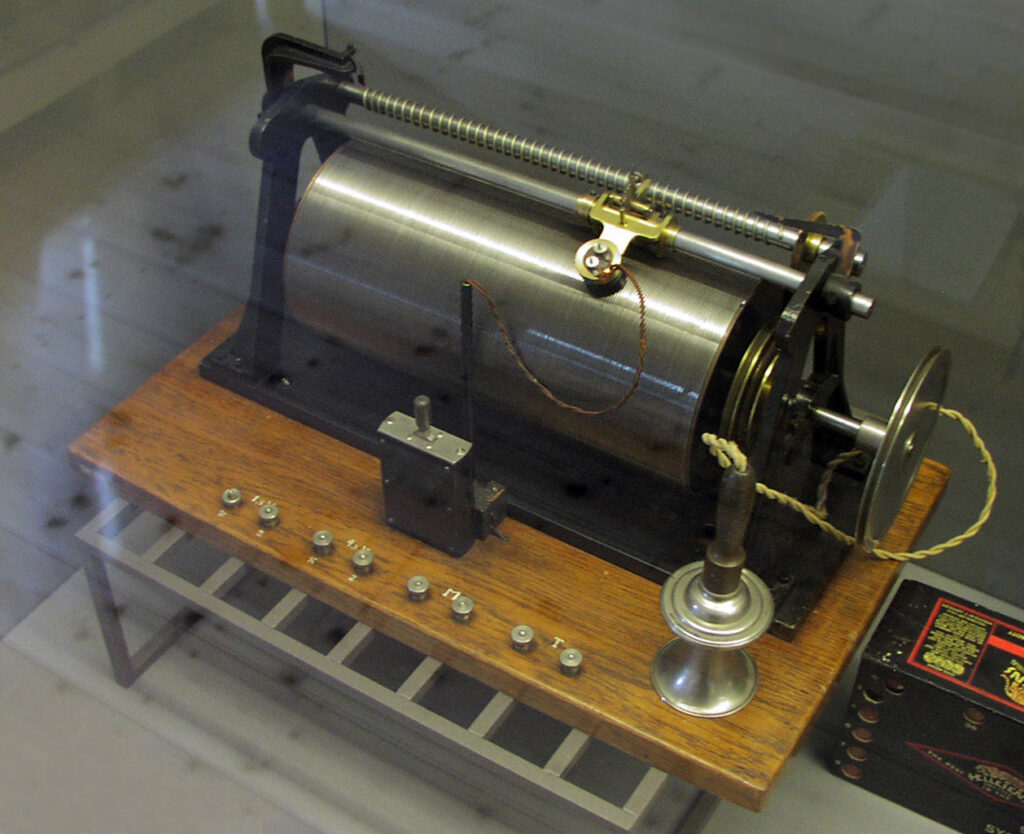Magnetic recording is a method of preserving sounds, pictures, and data in the form of electrical signals through the selective magnetization of portions of a magnetic material. The principle of magnetic recording was first demonstrated by the Danish engineer Valdemar Poulsen in 1900, when he introduced a machine called the telegraphone that recorded speech magnetically on steel wire. (Read more)
Poulsen recorded his voice by feeding a telephone microphone signal to an electromagnet that he moved along a steel piano wire. In 1899 he filed a patent and founded a company to build the telegraphone, a pioneering telephone answering machine. A simple version stored 2 minutes of audio on 130 mm (5 inch) diameter steel disks. A recording medium of steel wire wound around a cylinder held up to 30 minutes of audio. Poulsen’s associate Peder Oluf Pedersen (1874 – 1941) patented electroplating disks with different magnetizable materials. The telegraphone received a Grand Prix at the 1900 Paris World Exhibition where it recorded Emperor Franz Josef of Austria. (Read more)

In the years following Poulsen’s invention, devices using a wide variety of magnetic recording mediums have been developed by researchers in Germany, Great Britain, and the United States. Principal among them are magnetic tape and disk recorders, which are used not only to reproduce audio and video signals but also to store computer data and measurements from instruments employed in scientific and medical research. Other significant magnetic recording devices include magnetic drum, core, and bubble units designed specifically to provide auxiliary data storage for computer systems. (Read more)
Wire recording or magnetic wire recording is an analog type of audio storage in which a magnetic recording is made on thin steel or stainless steel wire.
To read about the magnetic wire recorder, see next page.


